Work Lesson Plan
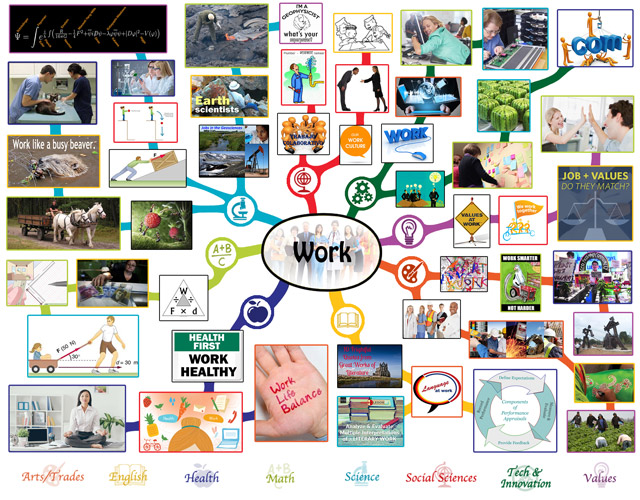
Lesson Plan Mindmap for Work ” Click to Enlarge
CLICK ICONS TO JUMP DIRECTLY TO EACH SUBJECT ON THIS PAGE








WORK LESSON PLAN
This page is a free-shared lesson plan archive for teaching all educational subjects within the context and theme of “Work”. It is purposed for use in community education environments, homeschool environments, traditional schooling environments, or as a supplemental and fun addition to any education program. As part of the complete Education for Life Program, this lesson plan is specifically designed to work in conjunction with the other components: Foundations of Teaching, Curriculum, Teaching Strategies, Learning Tools and Toys, Evaluation Model, and The Ultimate Classroom. If you’d like to learn how all these components work together, click here. Click here for the specifics focused on just using the lesson plans:
CLICK HERE FOR A DETAILED TUTORIAL ON HOW TO USE THIS LESSON PLAN
NOTE: The colors are provided as a possible linear progression (red/easiest to violet/most challenging) for people that might prefer a more linear structure. Our core philosophy, however, is that through creativity every color can be made easy or challenging for any learning level.
RELATED PAGES (mouse-over for descriptions and click for complete pages)
EDUCATION OVERVIEW | HOW TO USE THIS COMPONENT | OUR OPEN SOURCE PURPOSE
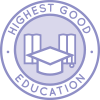
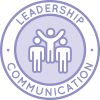
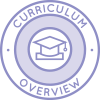
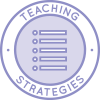
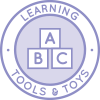
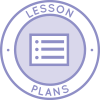
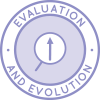
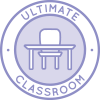
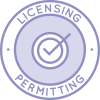

WAYS TO CONTRIBUTE TO EVOLVING THIS EDUCATION PROGRAM WITH US
SUGGESTIONS | CONSULTING | MEMBERSHIP | OTHER OPTIONS
A NOTE ABOUT ALL ONE COMMUNITY LESSON PLANS
The One Community lesson plans are intentionally designed for use in ANY educational environment and with ALL educational, cultural, religious/spiritual, and philosophical approaches to teaching and learning. They are designed without an ideological approach and specifically so they can be adapted to include the views, preferences, methodologies, and/or ideologies preferred by different parents and teachers.
For maximum flexibility and adaptation, they are also designed to be combined to teach multiple subjects at the same time. Doing this increases the creativity, effectiveness, and fun of your learning environment. Once we are on the property and operating our version of the complete school and Education for Life program, we will be adding video examples of how to combine the lessons. In the meantime, visit the Teaching Strategies page for a list of suggestions.
ARTS AND TRADES
CLICK HERE FOR THE COMPLETE SUBJECT OUTLINE FOR ARTS & TRADES
 | TEACHING ARTS AND TRADES WITHIN THE CONTEXT OF WORK |

| The Arts- Think of someone you know and draw a picture* of them working at their job.
- Think of a mainstream or alternative job you may want to do as work one day. Find some photos of people working at that job, and then draw a picture* of yourself doing that job.
- Find out about some jobs in an eco-village or commune, and create a graphical representation* of an imaginary eco-village or commune.
- Find one motivational quote about work (productivity, passion, etc), and draw a cartoon* for that lesson. For example, “Work smarter, not harder.”
- Find one motivational quote about productivity and work, and create a painting or multimedia piece* for that lesson. For example: http://thumbnails-visually.netdna-ssl.com/9-productivity-lessons-to-help-you-at-work_54e3cbad352c6_w1500.jpg
- Create a collage* of photos of people working at a variety of jobs, cut from magazines or printed out from the Internet. At the end, notice what themes emerge.
- Create an art* piece expressing what the word “work” means to you.
|

| Trades- Choose an occupation that usually requires a uniform, and using the Internet, find out examples of uniforms for this occupation from different countries. Then design and draw your own uniform*.
- Create a collection of drawings of hairstyles* that would suit people working in a certain occupation. Look online for inspiration.
- Imagine you are working in an accessories department. Create a collage* showing accessories that you believe are suitable for a job in an office setting, and another one for accessories that are more suitable for another type of job of your choice.
- Imagine you are working in the cosmetics department. Create a display* showing make-up looks that are suitable for different occasions, including working in various occupations.
- Imagine you are working in a department store and think about what you would recommend people wear to an office job. Create a display* showing the difference between casual, business casual, and business formal and signs explaining which is best for particular situations.
- Imagine you are working at a venue designing a program for a team building event for employees of an organization. After deciding what venue you are working for and what organization is the client, design the program and create an information e-flyer* for the client.
- Choose an occupation that usually requires a uniform and has hairstyle and/or make-up standards. Do some research online to find examples from various countries. Create a PowerPoint presentation* to display your findings, and at the end of the presentation include your ideas for various uniform-hair-make-up combinations, noting where you got the inspiration for each item or combination from.
|
| CLICK HERE TO EMAIL US IF YOU HAVE AN IDEA TO ADD TO THIS SECTION |
* Please note that anything with an asterisk is just a suggestion. The diversity of options with asterisks are interchangeable and purposed to stimulate your own ideas. Any one of these suggestions could be replaced with a written paper, any form of art project (drawing, painting, music, paper mache, clay, wood, knitting/embroidery, metals, etc. etc.), an experiment, a presentation, a mindmap, a computer program, a web design project, a piece of poetry or a song, an interpretive dance or play, a group project, or anything else. What we feel is most important is that both the Learner and the Teacher agree on an exercise/activity they both feel would be maximally engaging, fun, and effective. If you come up with an idea we haven’t already thought of, please share it with us.
ENGLISH
CLICK HERE FOR THE COMPLETE SUBJECT OUTLINE FOR ENGLISH
Note: Any language can be substituted for English. The subject is listed here as “English” because that is the primary language of most of the people on the team, and the official language of the country we’re building our initial location in.
 | TEACHING ENGLISH WITHIN THE CONTEXT OF WORK |

| - Learn and present* three phrases that are suitable for work or professional situations.
- Write down* five to ten different words or phrases you use in work or professional situations, and what corresponding words or phrases you would use in everyday life (with friends, for example).
- Write a short piece* about the specific patterns or social rules for conducting conversation within work or professional situations and (e.g. rules for opening and closing a conversation, how to take conversational turns).
- Write a list* of the components of business letters. Then type out a letter* in business format to a local business of your choice which offers them a suggestion.
- Write a one to three page paper* about how to write 3+ types of technical documents, including 2 sample documents for each.
- Write a report* about how to write job applications and resumes in general and then how to write at least five different types of these for five different types of jobs.
- Research how to write assessments of both one’s own performance and the performance of others in work environments. Create your own document* explaining how this should be done.
- Create a document* explaining how to write an organization’s mission statement, visions, and values. Then imagine creating an organization around something you are passionate about, write the mission statement, visions, and values for this organization, and document the thought process behind the decisions you make. If possible, see if any local organizations need your help in updating their mission statement, visions, and values.
|
| CLICK HERE TO EMAIL US IF YOU HAVE AN IDEA TO ADD TO THIS SECTION |
* Please note that anything with an asterisk is just a suggestion. The diversity of options with asterisks are interchangeable and purposed to stimulate your own ideas. Any one of these suggestions could be replaced with a written paper, any form of art project (drawing, painting, music, paper mache, clay, wood, knitting/embroidery, metals, etc. etc.), an experiment, a presentation, a mindmap, a computer program, a web design project, a piece of poetry or a song, an interpretive dance or play, a group project, or anything else. What we feel is most important is that both the Learner and the Teacher agree on an exercise/activity they both feel would be maximally engaging, fun, and effective. If you come up with an idea we haven’t already thought of, please share it with us.
HEALTH
CLICK HERE FOR THE COMPLETE SUBJECT OUTLINE FOR HEALTH
 | TEACHING HEALTH WITHIN THE CONTEXT OF WORK |

| - Draw a picture or cartoon* showing how one should balance work and play, rest and activity.
- Using the Internet, find* five examples of how people can balance work and play, rest and activity, and make a written plan* of which methods you are currently using and 2 additional you would like to use.
- Create a mind map* showing how people can balance work and play, rest and activity. Use your own life, the lives of those around you and online research in the mind map.
- Within a team environment, whether at work or in sports, it is important to encourage, energize and praise one another. Write a short piece* about this topic, including your own reflection.
- Write a report* about how to create healthy relationships in school and work environments, and include your reflections.
- In work, school and other environments in life, it is necessary to adjust to change and cope with stress in a healthy way. Make a video presentation* on this topic, including your own reflections and plan for better managing change and stress in the future.
- In work, school, and other environments in life, the ability to live and work independently is important, as is seeking and appreciating the support and assistance of others. Make a documentary* related to this topic.
|
| CLICK HERE TO EMAIL US IF YOU HAVE AN IDEA TO ADD TO THIS SECTION |
* Please note that anything with an asterisk is just a suggestion. The diversity of options with asterisks are interchangeable and purposed to stimulate your own ideas. Any one of these suggestions could be replaced with a written paper, any form of art project (drawing, painting, music, paper mache, clay, wood, knitting/embroidery, metals, etc. etc.), an experiment, a presentation, a mindmap, a computer program, a web design project, a piece of poetry or a song, an interpretive dance or play, a group project, or anything else. What we feel is most important is that both the Learner and the Teacher agree on an exercise/activity they both feel would be maximally engaging, fun, and effective. If you come up with an idea we haven’t already thought of, please share it with us.
MATH
CLICK HERE FOR THE COMPLETE SUBJECT OUTLINE FOR MATH
 | TEACHING MATH WITHIN THE CONTEXT OF WORK |

| - Pretend you are working in a grocery store, and make a list* of grocery items and their prices. Then determine the total amount the customer should pay. After that, imagine that the customer would like to give one of the items back to you – subtract this item’s cost from the total to determine the new total.
- Imagine you are working as someone who cleans swimming pools, and you charge clients depending on the volume of water that needs to be cleaned. Draw five swimming pools with different dimensions*, and determine the volume for each one.
- Pretend your work involves currency conversion. Write out at least ten amounts of money you need to convert, and convert each of them to different currencies, using currency conversion rates found online. Create a table* to document both your multiplication work and also the results.
- Imagine that your work involves creating floor plans of existing rooms. Choose one of the rooms in your home, take measurements of the perimeters and any furniture, and make a floor plan* that is to scale.
- Imagine that you are planning a trip and looking up how much Uber drivers are charging in different cities around the world. Make a list of 20 cities*, and then look up how much their Uber drivers generally charge as base rate, charge per distance and charge per minute. Write down the algebraic formula for what is costs to take an Uber car in each city.
- Imagine that you are working in a career center and need to document how much money new graduates should expect in each field, including some which offer a base pay and commission. Make a list of 20 jobs*, some paid per hour, some paid per month and some paid with a base rate and commission on top. Write down the algebraic formula for what workers in various jobs should expect.
- Pretend you work in project planning and management, in general or for a particular industry you like. What mathematics would you need for that? Write a short piece* about this.
- Choose an industry that interests you, and investigate about the applied mathematics used within that field. Create a lesson plan* for high school level students about this subject.
|
| CLICK HERE TO EMAIL US IF YOU HAVE AN IDEA TO ADD TO THIS SECTION |
* Please note that anything with an asterisk is just a suggestion. The diversity of options with asterisks are interchangeable and purposed to stimulate your own ideas. Any one of these suggestions could be replaced with a written paper, any form of art project (drawing, painting, music, paper mache, clay, wood, knitting/embroidery, metals, etc. etc.), an experiment, a presentation, a mindmap, a computer program, a web design project, a piece of poetry or a song, an interpretive dance or play, a group project, or anything else. What we feel is most important is that both the Learner and the Teacher agree on an exercise/activity they both feel would be maximally engaging, fun, and effective. If you come up with an idea we haven’t already thought of, please share it with us.
SCIENCE
CLICK HERE FOR THE COMPLETE SUBJECT OUTLINE FOR SCIENCE
 | TEACHING SCIENCE WITHIN THE CONTEXT OF WORK |

| Life Sciences- Collect* three pictures of domesticated animals which perform work for humans and label each picture with a description of the animals and what they are doing for work.
- Have you heard of the expression “busy bee”? Write 1-2 sentences* for each of at least five animals that work hard in nature, explaining what they work on.
- Choose one animal that is known to work hard in nature, and write a three to five page report* about this animal, including why it does the work it does and all the ways its body is adapted to do this work.
- Choose one animal or group of animals that perform a certain type of work (e.g. searching and retrieving), and write an in-depth report* about this animal, including its work in a domesticated environment and how they have been bred to display certain traits.
- Create a slide show for younger learners* about how different animals are adapted to do the work they do in their natural environment, and include information about how natural selection theory and anatomy relate to adaptation to the work the animals do.
- Create a presentation* about truffles and the pigs and dogs used to collect them. Describe various aspects of the pigs and dogs that make them useful for the work of finding truffles – including what these aspects would have been used for in nature and how humans have bred certain species to be good at these tasks – and various aspects of the truffles, such as why they are so difficult to find.
- Create a presentation* about a topic related to animals and work suited for a university-level course
|

| Physical Sciences- Energy is measured in terms of its ability to perform work. Draw a picture* showing something being moved, and think about where the energy moving this thing comes from.
- Find out at least three units (e.g. calorie, electron-volt) used to describe a measurement of work in Physics and exactly what work each unit does.
- Write a two page report* about what you feel are the 3-5 basic Physics equation for describing what work is, including equations that account for force and displacement. Also write about the unit(s) that are most commonly used to describe work.
- Create a visual presentation* about electrical work, including pictures or diagrams and real-life examples.
- Make a poster* about mechanical work, including pictures, diagrams, and real-life examples.
- Write a three to five page report* on heat-to-work and work-to-heat conversions, including the difference between the two and 5+ real-life applications.
- Create a demonstration* about the photoelectric effect, including the work function of metal, in the development of quantum mechanics, and add some current knowledge which interests you.
- Write a how-to manual* about a violet level topic related to work in the Physical Sciences that interests you.
|

| Earth Sciences- Read something about Space Science and imagine what a career in Space Science would be like. Draw a picture*, and write at least once sentence to describe your picture.
- Read about what Soil Scientists do, and write at least one paragraph* about your favorite part(s) of what they do*.
- Read about what Mineralogists do, and write a short report* about what they do and some interesting things about minerals and what they are used for.
- Read about what Hydrologists do, and write a short report* about what they do and some interesting things about hydrology and their practical applications.
- Read about what Volcanologists do, and a write a report* about an aspect or many aspects of Volcanology that interest you.
- Read about what Seismologists do, and write a report* about an aspect or aspects of Seismology that you find interesting.
- Write an essay* about a topic that would interest you if you were to work as a Geophysicist.
- Investigate and create a descriptive list* of Space Science work opportunities.
- Choose a career from the violet level in the Earth Sciences molecule, and create an open source informational or instructional guide book*, including new/current information, about a topic in that field that you feel is or could be world-changing.
|
| CLICK HERE TO EMAIL US IF YOU HAVE AN IDEA TO ADD TO THIS SECTION |
* Please note that anything with an asterisk is just a suggestion. The diversity of options with asterisks are interchangeable and purposed to stimulate your own ideas. Any one of these suggestions could be replaced with a written paper, any form of art project (drawing, painting, music, paper mache, clay, wood, knitting/embroidery, metals, etc. etc.), an experiment, a presentation, a mindmap, a computer program, a web design project, a piece of poetry or a song, an interpretive dance or play, a group project, or anything else. What we feel is most important is that both the Learner and the Teacher agree on an exercise/activity they both feel would be maximally engaging, fun, and effective. If you come up with an idea we haven’t already thought of, please share it with us.
SOCIAL SCIENCES
CLICK HERE FOR THE COMPLETE SUBJECT OUTLINE FOR SOCIAL SCIENCES
 | TEACHING SOCIAL SCIENCES WITHIN THE CONTEXT OF WORK |

| - Find two jobs that exist in another part of the world that do not exist where you live. Print out pictures of people doing these jobs, and create your own caption* for each picture describing what their work is.
- In some cultures, people tend to work to live, and in others, they tend to live to work. Write a paragraph* about each ( 2 paragraphs total), describing each way of thinking and find and include a picture of at least one culture/country in which people tend to think in each way.
- Think of an industry or job in which people from many different cultures either work together or have contact with one another. Think of different scenarios in which cross-cultural conflicts might arise and how best to manage these situations so that everyone respects one another. Create some comic strips* with captions to illustrate this scenario.
- In some cultures, people tend to work to live, and in others, they tend to live to work. Write a short essay* comparing these two ways of thinking, examples of cultures to which they belong and what your ideas are.
- Research at least one culture different from yours and make a visual project* that shows their working culture and how it has been affected by or is a reflection of the larger cultural environment.
- Write an essay* on the history of how weekends off, limited working hours, minimum wage, bans on child labor, and other measures to improve the lives of working people were fought for by organizations in history. Describe how life was in the past before these measures were in place.
- Explore* how some countries have better measures to improve the lives of working people than other countries (weekends off, limited working hours, minimum wage, etc), and the reasons for why some countries have more worker-friendly policies than others. Write out* a worker-friendly policy for at least one type of job that exists in your community.
- Explore works such as Fromm’s ‘To Have or to Be’ and write an essay* about different psychological and/or philosophical perspectives related to work. Include your own reflections and perspective.
- Create a college level humanities lesson plan* comparing laws/agreements related to different types of work (such as domestic work, work done by migrants, work/part-time work done by minors) in at least two countries, and explain similarities and differences using Sociology, History, and two other social sciences.
|

| Foreign Languages
(Each of the following is to be completed in the foreign language(s) being studied)- Create your own flashcards* for 5 to 10 different words related to work, such as names of occupations.
- Read a short book or magazine article related to work in the language you are learning. Then create a list* of 20 words within that book or article that you do not 100% understand and write down their definitions in English.
- Read a short book or magazine article related to work in your foreign language. Then write a summary* of this book or article, which should be at least two paragraphs long.
- Read a piece of fiction related to work in your foreign language. Then write a book report* of this piece, which includes: (1) an introduction, (2) a summary of the book, (3) a description of the characters, (4) the plot, and (5) an evaluation and conclusion.
- Learn words and phrases commonly used in job interviews. Create a role play* in which you answer either with your own information or that of a person you make up.
- Learn how to write a cover letter and resume/cv. Write a job application* using your information.
- Write a “how to” manual on finding a job, business etiquette, and business correspondence and/or anything else work-related in a country which uses the language you are learning. Display your knowledge of this language.
|
| CLICK HERE TO EMAIL US IF YOU HAVE AN IDEA TO ADD TO THIS SECTION |
* Please note that anything with an asterisk is just a suggestion. The diversity of options with asterisks are interchangeable and purposed to stimulate your own ideas. Any one of these suggestions could be replaced with a written paper, any form of art project (drawing, painting, music, paper mache, clay, wood, knitting/embroidery, metals, etc. etc.), an experiment, a presentation, a mindmap, a computer program, a web design project, a piece of poetry or a song, an interpretive dance or play, a group project, or anything else. What we feel is most important is that both the Learner and the Teacher agree on an exercise/activity they both feel would be maximally engaging, fun, and effective. If you come up with an idea we haven’t already thought of, please share it with us.
TECHNOLOGY AND INNOVATION
CLICK HERE FOR THE COMPLETE SUBJECT OUTLINE FOR TECHNOLOGY AND INNOVATION
 | TEACHING TECHNOLOGY & INNOVATION WITHIN THE CONTEXT OF WORK |

| Technology- Draw a picture* of one type of technology that has made at least one type of job or work easier, and specify which jobs it has made easier. (For examples, dishwashers have made the job of people in restaurants responsible for the dishes easier.)
- Investigate how computers have made office work easier. Create a mindmap* or other visual display to illustrate your points.
- Investigate how robots have made production (factory) work easier and how. Create a mindmap* or other visual display to illustrate your points.
- Research how the Internet has made administrative and other work easier by allowing online collaboration, access to information, etc. Create a PowerPoint presentation* or something similar.
- Research how word processing, spreadsheet, presentation and related software (such as OpenOffice) have made various types of work easier. Create a PowerPoint presentation* on this topic, which demonstrates that you know how to use OpenOffice programs.
- Research how social media has made work related to sharing things you care about and marketing easier. Create a PowerPoint presentation* on this topic, showing that you know how to use social media in this way.
- Research how robotics and automation has affected manufacturing systems and the people that work in manufacturing. Write an essay* about this, including both the benefits and the drawbacks of robotics and automation.
- Explore innovative tools that have made construction work easier, either in general or within one specialty. Write a report*.
- Explore innovative tools that have made medical work easier, either in general or within one specialty. Write a report*.
- Make a videotaped presentation* for the internet about how man-made lighting and/or other types of technology have made it easier for humans to carry out work and any consequences.
|

| Innovation- Imagine you are working in a certain job that interests you. Draw a picture* of what you imagine your work environment would be like.
- Write at least one paragraph* on intrinsic motivation and at least one paragraph on extrinsic motivation. List examples of each within the context of work.
- Write a short report* about project/idea engineering and reverse engineering and how they are used in the world of work.
- Write a report* exploring various types of artistic and creative flow ” brainstorming, sketch-booking, creative visualization, stream of consciousness writing, improvisation, etc. – and examples of how they could be useful in various types of work.
- Write a report* on personal organization systems, including physical versus psychological examples (e.g. time management). How are these useful in the world of work? Give some examples.
- Write and publish an essay* on corporate responsibility and philanthropy, including the positive aspects (for example, jobs they offer and the role they play in ameliorating inequality) and negative (for example, preventing bigger changes that would lead to increased equality).
- Produce a documentary* on the role of multinational retail corporations that operate chains of large discount / warehouse stores. Include reports of exploitation of staff and impact on surrounding communities.
|
| CLICK HERE TO EMAIL US IF YOU HAVE AN IDEA TO ADD TO THIS SECTION |
* Please note that anything with an asterisk is just a suggestion. The diversity of options with asterisks are interchangeable and purposed to stimulate your own ideas. Any one of these suggestions could be replaced with a written paper, any form of art project (drawing, painting, music, paper mache, clay, wood, knitting/embroidery, metals, etc. etc.), an experiment, a presentation, a mindmap, a computer program, a web design project, a piece of poetry or a song, an interpretive dance or play, a group project, or anything else. What we feel is most important is that both the Learner and the Teacher agree on an exercise/activity they both feel would be maximally engaging, fun, and effective. If you come up with an idea we haven’t already thought of, please share it with us.
VALUES
CLICK HERE FOR THE COMPLETE SUBJECT OUTLINE FOR VALUES
 | TEACHING VALUES WITHIN THE CONTEXT OF WORK |

| - Write down* three types of work, one that you feel matches each of the following themes: sharing, play, and imagination.
- Cut or print out pictures for jobs that represent values important to you – such as creativity, fitness, self-expression, change – and create a visual display*.
- Create a report with visuals* about jobs that represent values that are important to you, including contribution, self love, health, happiness, community and transformation. Include short descriptions of each type of work.
- Choose at least one of the following values to explore in depth, as related to types of work: love, support, collaboration, highest good of all, hospitality, joy, intuition. Write a short essay*.
- Write an essay* about types of work that, for you, represent psychological health, nutritional health, holistic being and/or emotional health.
- Create an art piece* about the roles of empathy, sympathy, and compassion in your life and in different types of work.
- Create an instructional pamphlet* about how one should go about choosing a job role or work in line with one’s core values.
|
| CLICK HERE TO EMAIL US IF YOU HAVE AN IDEA TO ADD TO THIS SECTION |
* Please note that anything with an asterisk is just a suggestion. The diversity of options with asterisks are interchangeable and purposed to stimulate your own ideas. Any one of these suggestions could be replaced with a written paper, any form of art project (drawing, painting, music, paper mache, clay, wood, knitting/embroidery, metals, etc. etc.), an experiment, a presentation, a mindmap, a computer program, a web design project, a piece of poetry or a song, an interpretive dance or play, a group project, or anything else. What we feel is most important is that both the Learner and the Teacher agree on an exercise/activity they both feel would be maximally engaging, fun, and effective. If you come up with an idea we haven’t already thought of, please share it with us.
OTHER RESOURCES
We're building a resource section. Click here if you have a suggestion or resource for this page.
OPEN SOURCE SUBJECT RESOURCES (click icons for complete pages)



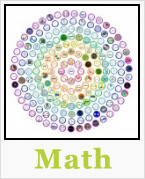



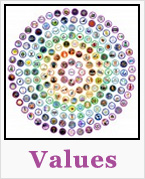
OPEN SOURCE CURRICULUM OUTLINES (click image for summaries and links to complete pages)
CARE
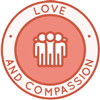
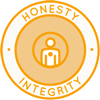
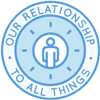
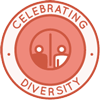
SHARE
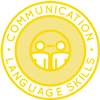
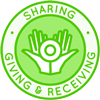
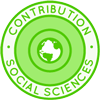
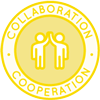
PLAY
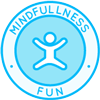
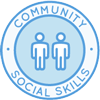
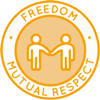
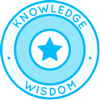
OPEN SOURCE TEACHING METHODOLOGY SUMMARIES
Montessori | Waldorf | Orff | Reggio | Multi-Intelligence | Bloom's Taxonomy | Study Tech | I-WE
INDEX OF ALL THE ONE COMMUNITY OPEN SOURCE LESSON PLANS

Click this image for the Lesson Plans for Life page with links to the rest of the lesson plans
THE WORLD'S LARGEST ONLINE FREE EDUCATION RESOURCE ARCHIVE
RELATED CONTENT AND OTHER RELATED RESOURCES
We're building this resource section. Click here if you have a suggestion or resource for this page.
























 One Community
One Community



